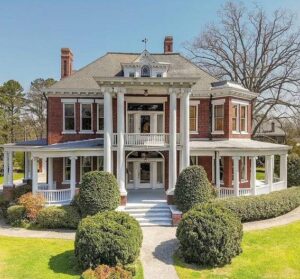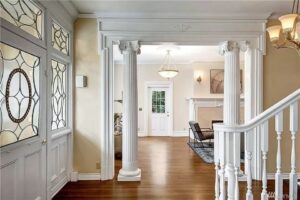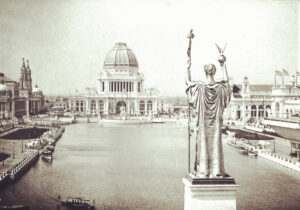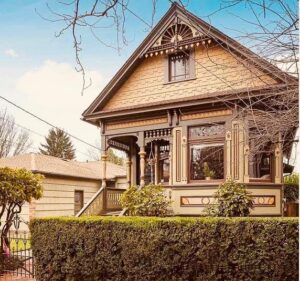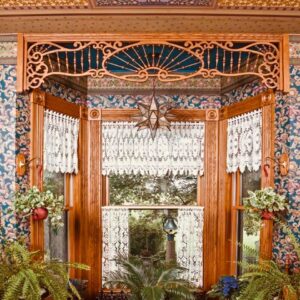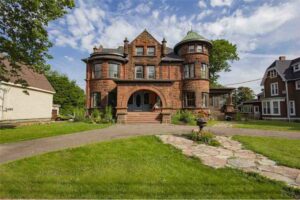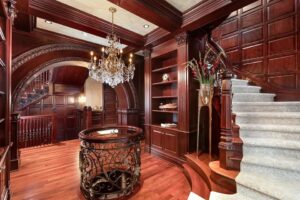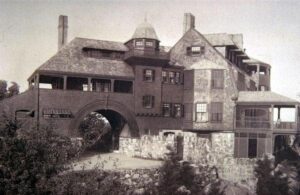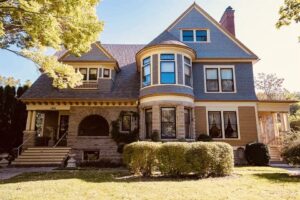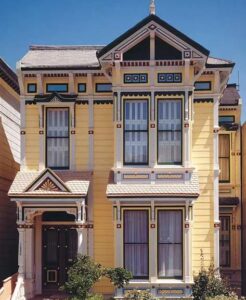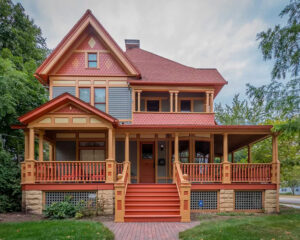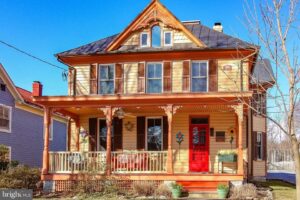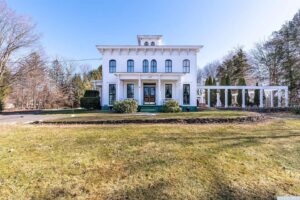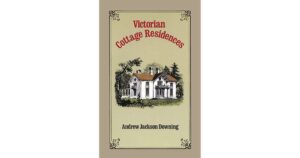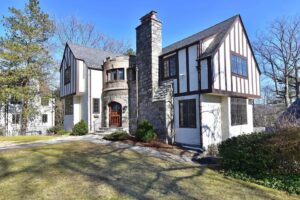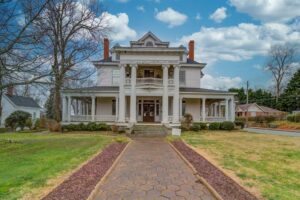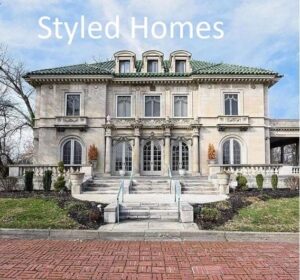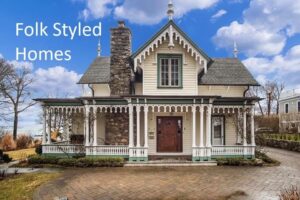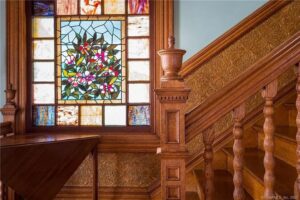Neo-Classical homes were built after the popularity of the classical structures that were built for the Columbian Exhibition in Chicago in 1893. This was the opportunity for people to build an impressive home that would make their place in society known, quite unlike the smaller and simpler homes they have been used to. Whether on a plantation or in the city, these homes were imposing and featured tall two storey Corinthian or Ionic columns. Facades were symmetrical, and windows and doors were placed in an orderly fashion vertically. Highly detailed cornices, railings, trims and doors added more formality and visual interest to these sophisticated designs. The interiors were a place to add more touches of elegance and historical detailing.
Have you heard of the Colonial Revival Style of house design before?
The Colonial Revival style looked back to the shapes and proportions of the original Colonial homes, for inspiration. Continuing the focus on symmetry and simplicity of form, this new improved and style had the luxury of technology and industrialization which offered high quality building products. This new reality reduced the need for skilled local craftsman and tradespeople.
This style also evolved from the Georgian and Federal architectural styles. Small windows were no longer a limitation on these homes and now larger double hung windows could be placed in pairs. Elaborate trimwork and moldings became easily available inside and out. An accented central front door often would have flanking sidelights and a fan light transom over. Covered porches with slender tapered columns and a decorative pediment were popular. Today many of our traditional homes are built from Colonial Revival style elements.
The Victorian Styles featured previously in our series on the architecture of home offered a loose interpretation of the old styles, but with an important change. It became easier to acquire mass produced building products through delivery via the railroad. But another change was on the way…
The Eclectic movement began in the late 1800s as European architects designed homes for wealthy clients. In 1893, the Columbian World Exhibition was held in Chicago.
Few events have influenced the direction of architecture like this world’s fair. It was decided by decision makers of the fair that all the buildings would be Classical in style. Some American architects were empowered to design homes in these classical traditions. Once they saw these white classical structures, some others were committed to leaving all this European influence behind and set out to form a truly American architectural style.
This polarizing event kick started the Eclectic period which includes 14 distinct housing styles. Stay tuned to learn more!
Have you heard of Folk Victorian homes before? They are next up in our exploration of the architecture of home!
The earliest wood frame homes were often quite simple structures built with gabled or hip roofs. Ornamentation and design services were scarce at the time, and these first homes accommodated the need for immediate shelter on a tight budget.
With the abundance of mass-produced decorative millwork components coming from steam powered factories via the railroad, home builders now had a way to personalize their new homes. The most important application was the front porch which would receive turned or square wood spindles, and lacy wood spandrels and brackets which became known as ‘gingerbread’ trim. For simplicity, these homes were quite often symmetrical. A variety of colors would provide additional relief to the otherwise plain walls.
Henry Hobson Richardson an architect from Boston created this Victorian Style, after working with the Queen Anne style. This style of homes was always constructed of brick or stone, usually in a combination of colors and textures. A Romanesque arch (a half round shape) made from rough cut stone was the identifying feature over an entry porch. This distinctive detail was set on top of robust smooth granite columns. These asymmetrical designs featured steep gabled roofs, and towers with conical roofs.
Inside these homes used similar detailing with wood arches and classical trim work.
These houses were very expensive to construct, compared to the popular balloon framed wood homes. Most of the built examples were churches and other civic buildings where the stately style offered a sense of permanence and stability.
Today as we continue to explore the architecture of home, we look at Queen Anne style homes!
As we continue to explore the architecture of home today, we look at Shingle styled houses!
Most Shingle styled homes were built along the East Coast, between 1880 and 1900. These seaside summer homes were clad in wood shingles, which provided a seamless finish for the free form shape. Unusual to the Victorian styles, these homes had no exterior decoration, their massing and form providing the interest and detail.
Covered porches provided protection from the elements and extended the living space outside often supported by classical round columns. Asymmetrical roof lines featured steeply sloped gable and gambrel roofs with towers, shed dormers and eyebrow roofs. Windows were a variety of shapes, including combinations of shapes and sizes in the same grouping.
Photo credit: George William Sheldon
Today as we continue to explore the architecture of home, we look at Queen Anne style homes!
These homes are notable for their distinctive shape and patterns of decoration. These Victorian styled homes feature steeply sloped roofs, and the large gable dominated the front elevation. This asymmetrical façade usually had a front veranda, which continued down one side as well. These porch roofs were supported by highly detailed turned wood columns, often painted in contrasting color.
A tall round tower with rounded glass and bay windows were common as well. Wall finishes were often broken up from floor to floor, with clapboard or shingles on the upper floors and brick or stone on the main floor separated by a flared wood detail. Inside these homes continued the level of detail with spindle work and beam work.”
The second Victorian style is the Stick Style which was most popular from 1860 to 1890 when wood was abundant and readily available. This style was all about decorative detailing, both inside and out. This wood trim, known as ‘stickwork’ was applied to the face of the wall to resemble the wood half-timbering of the Medieval English homes, mimicking wall framing, roof beams and bracing. Under all this elaborate trim was a balloon framed house! The multi-textured finish in the walls included wood siding and shingles usually painted in contrasting colors to further accent the detailing. Roofs were steeply pitched and windows were often leaded. Rafters were exposed to continue the emphasis on structural members.
Inside, these homes the stickwork and decoration continued. As was very common with other Victorian styles, every surface was treated as an opportunity for more detail and decoration.
Photo credit Old house online
Queen Victoria ruled from 1837-1901. This was a pivotal time for house design andconstruction as the new Victorian Style spread across North America. The rapid growth of industrialization and the construction of the railroads suited a building boom where new home styles and construction techniques were being promoted. Balloon framing, where walls were framed with dimensional lumber as opposed to timber and logs, opened up possibilities for windows and doors in all shapes and sizes. Roofs could now have overhangs, and eave decoration in any angle or roof slope. Mass produced decorative items also were now very affordable and readily available. Until now, this extravagant use of decoration was only available to the wealthy. Now it was the style, and the more the better, both inside and out. Styles were mixed and there was not a lot or regard for some of the earlier context of the elements. Now in this style, new styles emerged to meet the need for creativity and local popularity.
The Italianate style was a very popular Romantic Style, and was based on the rambling homes on Italian farms. The façades would most often be symmetrical and aligned to project a sense height. The most identifiable element was the tall square tower that projected above the roofline. Roofs were a variety of slopes from flat to Mansard type. The eave was accented with decorative eave brackets (often in pairs) in the line of the very detailed cornice. Windows were tall and narrow with arched or flat tops, some with decorative wood hoods over. Doors were either single or paired set into elaborately trimmed frames. Single storey porches were common supported by highly stylized wood columns.
These Italianate homes were built across the American Midwest, and were especially popular in the San Francisco area many surviving the earthquake and fire of 1906.
In 1842 Andrew Jackson Downing, an American Landscape architect published the first popular pattern book of 28 ‘Romantic’ home designs entitled Victorian Cottage Residences. This was a unique opportunity for homeowners and builders to see styles of homes other than the prevailing Greek Revival style. He is considered to be the father of American Landscape Architecture. He promoted Gothic Revival Architecture, including Carpenter Gothic and started the concept of a front porch being a link between the inside and outside spaces. He felt strongly that a person’s pride in their country is connected to their pride in their home. If they could decorate and build their homes to symbolize the values they hoped to embody, they would be happier people and better citizens.
Andrew Downing designed the grounds of the White House and the Smithsonian in Washington DC. In 1853 he was on his way to New York to work on the design for Central Park when the steam ship he was on exploded and he was killed.
When you hear the term Colonial, it can have many meanings, based on the origin of the builders. Because this includes homes built from 1600 – 1820 we won’t see any of these locally, but you might when you are travelling.
Medieval English homes had steep roofs which would have been originally thatched. Windows were small and leaded and massive fireplace chimneys dominated the roof-line.
Dutch Colonial houses were single or one and one half storey with gambrel roofs and large chimneys at either end.
French Colonial homes were single storey with steep cottage or gable roofs. Narrow doors and windows were shuttered.
Spanish Colonial structures were one storey with low sloped or flat roofs over thick adobe walls.
Georgian /Adam houses were two storey and had symmetrical facades with a regular pattern of windows, various roof types and an accented front door.
Early Classical Revival façade of Roman Doric or Tuscan columns supporting a front gabled porch roof. These symmetrical buildings were usually two storeys and featured classical detailing and ornamentation.
As we look to History for our connections to Architectural styles, it is important to stop and acknowledge that others who have come before us locally and distant, had their own essential methods and traditions of building and style. Again, these styles were predicated by the available materials and tools, and the lifestyle, location and social needs of the builders. These traditions and building techniques were passed down over centuries without the benefit of books, You-Tube videos or Autocad. This includes Indigenous structures such as teepees, log buildings, sod, adobe and stone. There are many lessons to be learned from these structures which today we call ‘organic’. When we build green and think of the environment, we are also honoring these early homebuilders.
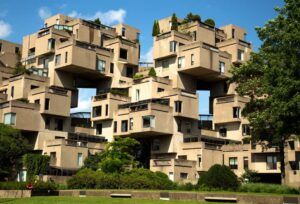 Today in our lecture series on the architecture of home, we begin to explore some more modern styles!
Today in our lecture series on the architecture of home, we begin to explore some more modern styles!
The Arts and Crafts movement in England turned its back on the historical precedents of the earlier styles, leading to the development of the Craftsman and Prairie styles. After WW1, the period styles flourished, but returning WW2 Soldiers did not want to build from these old styles that they had seen while on the battlefield.
The Modern Movement offered new styles, free from historical overtones for them as they started a new life back home. Suddenly the ‘honesty of structure’ celebrated an exposed framing system. New evolving technologies made large uninterrupted expanses of glass possible and walls invisible.
Advances in heating and cooling made homes more comfortable and clean. The Ranch style home became the most common house in North America due to it’s simplicity and affordability. Without any historical significance, new contemporary styles could take on many forms, with creativity and emerging building practices.

In today’s post on the architecture of home, we move on from medieval architecture to explore the Renaissance Classical style!
Italy had never really embraced the Gothic style of the Medieval tradition, and it was there in the 15th century that a new direction in literature, science, philosophy, art and architecture was developing. Architects in Florence were busy designing the many churches which were in demand. These amazing structures took the form of classical Roman temples and were built of stone, featuring symmetrical floor plans and facades with columns, pediments, pilasters and rounded arches (never pointed). A series of repetitive elements would repeat throughout the façade.
Here is a phrase to remember…”the duality of the parts reinforces the unity of the whole”. This time architects favored the horizontal dimension over the emotional vertical Gothic spires.
The Renaissance Classical style has stayed relevent over the centuries as many civic buildings adopted the style because of the democratic theories introduced with the style. The Beaux Arts and Neo-Classical styles which grew out of this formal style will be explained in upcoming posts.
Medieval architecture (500AD – 1500AD) followed the previously featured Ancient Classical styles. Until this time, the main focus of structures was the design of the iconic monumental exteriors. When the desire for large religious and civic buildings demanded assembly space, the race was on to see who could design and build the tallest and largest building. The emphasis was on the vertical dimension as buildings could now achieve soaring heights. The use of Gothic pointed arches helped achieve this and skilled artisans worked together to introduce artwork, carvings, and stained glass to further enhance the style and the experience of being inside them.
Domestically, houses at this time were simple wood timber frame structures with thatched roofs. Half timbering involved heavy wood timber framing with stucco infill panels. These early homes were very dark with small leaded windows, and smoky with simple open fireplaces. Today we build on this aesthetic with Tudor Revival homes.

The ancient architecture of Greece (100 BC – 500 AD) featured full height entry porches comprised of rows of large columns of various classical orders. These structures usually featured a symmetrical two storey façade, and a low sloped gable roof. Doric, Ionic and Corinthian styled columns were utilized, which could be round, square or octagonal. Despite the tools and technology available at the time, these structures were extremely precise and stable. Marble was the preferred material with wood timber roofs.
This monumental style was the basis and inspiration for three subsequent styles: Early Classical Revival, Greek Revival, and Neo-classical. We will be featuring these in upcoming posts.
There are two principal types of homes which help us determine a style. “Styled homes” are modeled after one of four principal architectural traditions: Ancient Classical, Renaissance Classical, Medieval and Modern. There is a conscious attempt to follow the massing, materials and features of a certain style. We will touch on each of these in the next few posts.
“Folk Homes” are what we typically see in our cities and towns. Many of these homes are built with little regard for design, but with the need for basic shelter and affordability.
Many ancient styles became popular again in the 19th century. These are known as ‘Revival’ adaptations. More recent interpretations of these old styles may have the prefix ‘Neo’ added. Many current styles are based on these versions of these classics.”
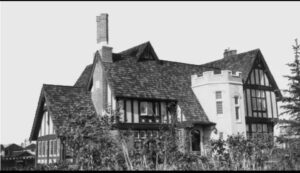
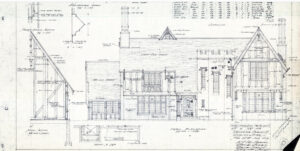
While some architects and designers might strive to keep the elements of the various architectural styles intact, many, including Regina’s firm of Storey and Van Egmond embraced and experimented with a more eclectic combination of styles. As we start out to become armchair architects, this certainly makes things complicated and challenging.
The first two decades of the 20th century were unique in that there were architectural styles coming out of the US and Europe which were a departure from the austere and budget conscious first homes built here.
Widely available magazines featured beautiful homes which local developers and home owners wanted to emulate. The railway and mechanization made it possible to order in detailed millwork and trim packages. This was a time of experimentation as architects tried new and historical styles. Very often it was a combination of several styles that we now refer to as Eclectic stylings.
Images show the original architectural blueprints for and a photo of the finished historic Cook Residence located at 3160 Albert St., built in 1929 in the Tudor Revival style.

Today is the day! We’re so excited to launch our first ever virtual lecture series, right here on Facebook and Instagram. We invite you to join local historian John Robinson to explore the elements of what make our houses feel like home.
We’re presenting an online class that will take you on a comprehensive architectural journey beginning with the iconic structures of the Greeks and Romans and wrap up with the contemporary styles of today.
If your home is your “castle”, it can take many forms. Most of us are fascinated with houses and have very definite views on what we would call home. This introduction to styles will offer an overview of what is important to the style so restorations and upgrades can be planned correctly. It might help you to become an armchair architect as your spot a unique home and are able to identify its style! We welcome you to share your questions and comments.
Heritage Regina is excited to launch our online “lecture series” What’s Your Style, Understanding Regina’s Residential Architecture. Starting on September 14, John Robinson will be featuring the many architectural styles that shape our idea of home, and the elements of each style. This seven week presentation features weekend quizzes with great prizes.
Stay tuned for updates on our Stained Glass Workshops, which are being planned for this fall.

